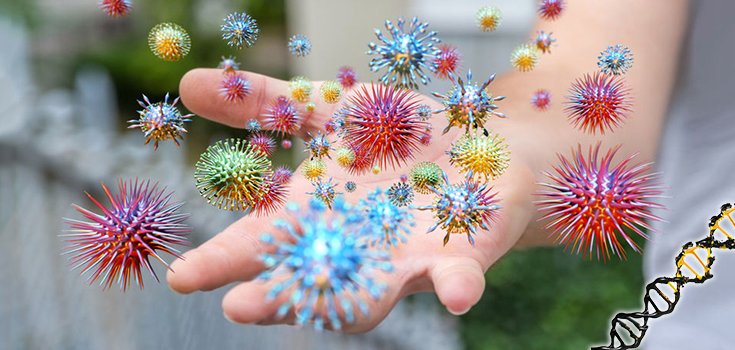Study Finds Airborne Antibiotic-Resistant Genes in Major World Cities

About 2 million people in the U.S. are thought to be infected with antibiotic-resistant superbugs every year. One study published earlier this year shows that people living in large cities are probably inhaling the genes that make bacteria immune to antibiotics, right along with plain old, run-of-the-mill air pollution. [1]
It is antibiotic-resistant genes that cause bacteria to become immune to the common medicines, and the genes have the ability to move between different types of bacteria, as well as from bacteria in the environment, according to scientists. Bacteria don’t simply become immune to antibiotics on their own; the genes are necessary.
Researchers from the American Chemical Society have found that at least some of these genes are floating through the air around farms and parks in the United States.
Short of wearing a mask everywhere you go, it’s impossible to avoid them. Even then, you could still end up inhaling some.
Now, the team of researchers is calling on the government to change the way pollution is measured to explain the risk associated with breathing in antibiotic-resistant bacteria.
Superbugs are a Real Problem

Superbugs pose a unique challenge to scientists. Experts have warned that superbugs could claim up to 10 million lives each year and cost $100 trillion by 2050. [2]
There is a solid reason for concern, as antibiotic resistance is on the rise. A 2017 report shows that drug-resistant Enterobacteriaceae bacteria have increased 700% in U.S. children since 2007. The children who were infected with the bacteria in the study had hospital stays that were 20% longer than patients whose infections were vulnerable to antibiotics.
Another study published last year suggests that the spread of carbapenem-resistant Enterobacteriaceae (CRE) may be more far-reaching than scientists previously realized. CRE are called “nightmare bacteria” by then-CDC Director Tom Frieden because the bugs continue to thrive even after being attacked with “last-resort” antibiotics reserved for only the toughest of infections. This is because CRE has numerous genetic traits that make it easy for the bacterium to transfer between the many CRE species.
Science is woefully behind when it comes to developing new antibiotics, and many pharmaceutical companies are reluctant to develop new drugs because they don’t make the same big bucks as long-term therapeutics, such as medications that treat hypertension or high cholesterol.
The Airborne Threat

A team of researchers from the U.S., China, South Korea, Switzerland, and France examined air samples from nearly 2 dozen cities, including San Francisco, Paris, Warsaw, Zurich, Beijing, Brisbane, and Seoul, finding airborne concentrations of antibiotic-resistant bacteria in every city at varying levels. [2]
They discovered the bacteria were coming from concentrated animal feeding operations, hospitals, and wastewater treatment plants, among other sources, the team writes in Environmental Science & Technology.
Their findings suggest that superbugs can hop from bacterium to bacterium, through the air to other continents, and across the entire planet, putting millions of people at risk, even if they don’t live in the city of the bacteria’s origin.
Dr. Maosheng Yao, a collaborating author of the study, said:
“Common everyday human activities such as car traffic can kick up the bacteria and make them airborne. Natural winds can also suspend these biologicals into the air.”
The aeration process in wastewater treatment plants can send drug-resistant bacteria into the air. However, you’re most likely to find superbugs lurking in hospitals where antibiotics are prevalent, or around farms where animals are given antibiotics for disease prevention.
The Worst of the Worst
- In the U.S., San Francisco had the highest levels of airborne antibiotic-resistant bacteria. When it came to the largest variation of antibiotic-resistant genes, Beijing came in first, with 18 different types, accounting for 60% of the total types of genes in the study.
- The city with the fewest airborne antibiotic-resistant bacteria was Bandung, Indonesia.
- Genes immune to beta-lactam antibiotics – including penicillin and quinolones – were the most commonly detected antibiotic-resistant genes in all 19 cities. These particular medicines are used to treat a variety of bacterial infections, including typhoid fever, and urinary tract infections (UTIs).
- The least common gene found was resistant to vancomycin, a last-resort drug used to treat MRSA.
If someone has particular bacteria inside them and an inhaled antibiotic-resistant gene attaches to it, the bacteria could morph into a superbug, making treatment extremely difficult.
Sources:
[1] Daily Mail
[2] EcoWatch
